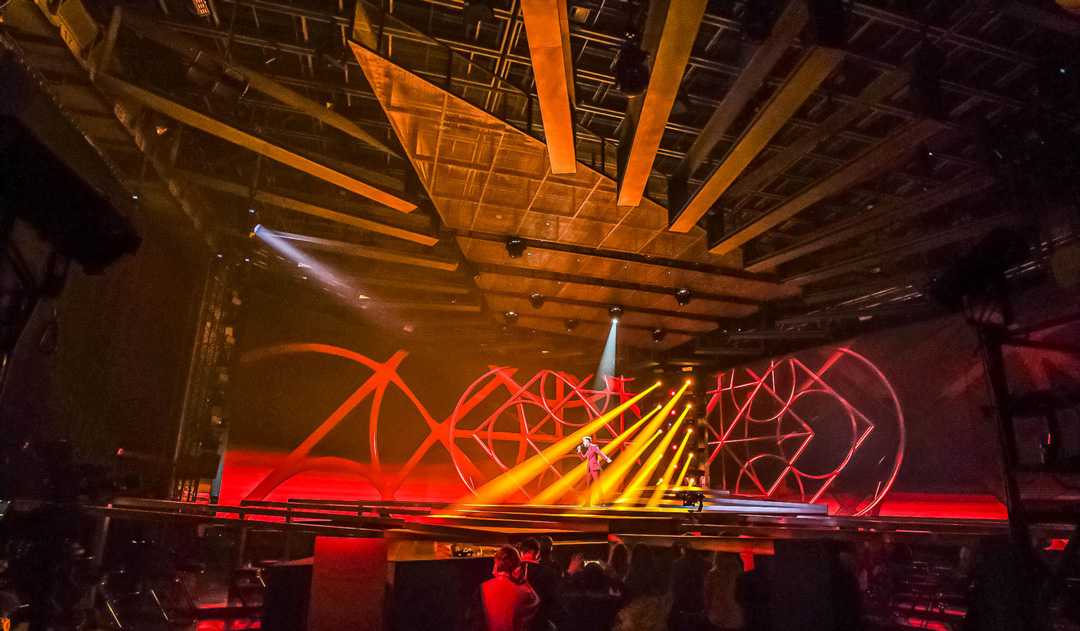Robe Forte on song for Eurovision selection shows
- Details

Lighting designer Crt Birsa utilized 66 x Robe moving lights including 13 of the new high-powered Fortes, to ensure the challenge of lighting his seventh ESC selection offered plenty of vibrance and flair. He was tasked with creating 24 different environments in which the contestants could perform their entries, for which he collaborated closely with set / scenic designer Greta Godnic, video content creator Den Baruca and director Nejc Levstik.
Crt was using Fortes for the first time. These were supplied - together with all the supplemental show lighting which also included 53 other Robe fixtures - by Slovenian rental specialist, Event Lighting. Crt’s design also took advantage of lights in the TV studio’s house rig.
The director’s brief included wanting to see a lot of contrast between the different artists, so Greta hit on the idea of having two totally different setups - offset by 90 degrees to one another - on the same stage, allowing performers and cameras to simply turn around to present a dramatically different ‘stage’ and visual picture in the background.
The first look had a large upstage LED screen that set the visual aesthetic, with all the light sources present but hidden from view, which contrasted sharply with architecture on the other scene that was more defined by lighting beams and looks, again with the physical hardware largely concealed, but the sources and effects extremely present.
The Fortes were positioned on the floor, filling the background area of both spaces and blasting powerful beams and gobo looks in from upstage. As the only lights deployed on the floor, they also had a very strategic role, hidden behind the horizon of the 1.8-meter-high stage piercing all the camera shots with their fabulous fat beams.
“I loved the beams, the intensity, the colours as well as the general smoothness, and they worked very reliably and accurately through all the broadcasts,” he elucidated, adding that he also appreciated the refined colour mixing - both the CMY system and the colour wheels - and he enjoyed the new contemporary gobo selection. Also on the rig were 19 Robe MegaPointes and 15 Pointes.
Two Robe BMFLs were used for the key lights on each stage view and 11 x ParFects were used for lighting the lower sections of set. Crt also used six Robe Square 5x5 matrix moving LED wash fixtures as specials.
Crt, Greta and the creative team started work on the project in November. Their workflow included visualising the set, lighting and video in WYSIWYG allowing all to properly see the juxtaposition and synergies of the different elements as they received music from the different artists and decided on the base looks for each piece.
On site, lighting was programmed by Crt, a complex task due to the asymmetric design and the shared and individual lighting aspects for the two different set-ups. Each contestant’s song was timecoded for precision and the camera shots and vision mixing were pre-programmed using CuePilot, so they arrived on set well-prepared enabling the time to be used efficiently.
Slovenia’s winning entry was Disko by LPS who will represent the country in this year’s Eurovision Song Contest Finale in Turin in May.
















